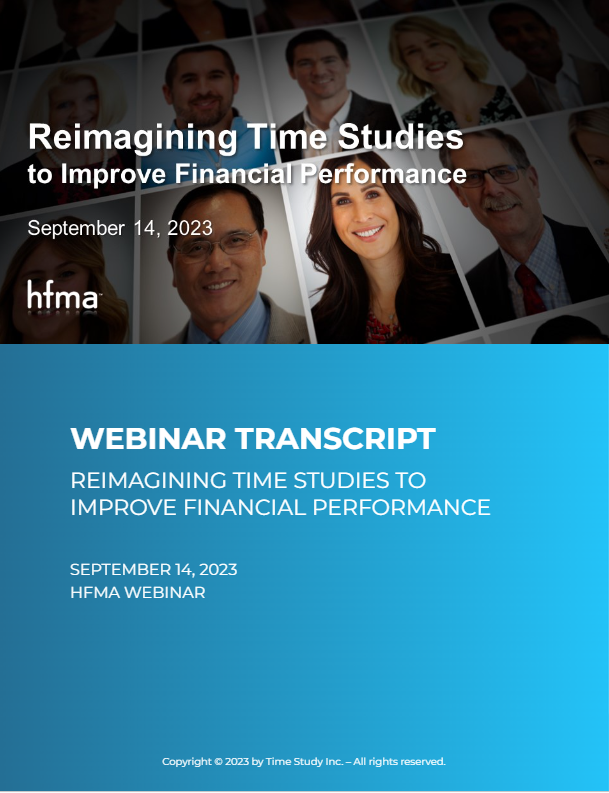The Forgetting Curve: Why Completing Time Studies Now Is So Critical
What did you have for breakfast today or lunch yesterday? Recalling anything from last week, off the top of your head, is probably a lost cause. It’s called short-term memory for a reason!
In the 1880s, the idea of transient memory was studied by Hermann Ebbinghaus. The German psychologist conducted experiments and he showed how our memories rapidly decay over time. The chart picked up the moniker of the Forgetting Curve. Ebbinghaus’s data showed the following memory retention:
After 20 mins: 58% retention
After 1 hour: 44% retention
After 1 day: 33% retention
So after just one hour, a person forgets well over half (or 56%, to be precise) of their memories. It is worth noting that Ebbinghaus’s experiments asked people to consciously retain unique information. So for someone going about their daily routines, the drop-off is significantly higher.
Red Flags That Increase Audit Risks, Reduce Reimbursements
Physician and other staff time studies require accuracy and detail – and those directly correlate to how close to real-time the activities are recorded. Insufficient detail has a two-fold penalty of under-reporting time that is reimbursable and, more worryingly, it creates an audit risk.
Following are some “red flags” regarding time studies:
Recall Bias – This is the misclassification of information due to biased memory retrieval. Typically this would appear as a “favorable” or “optimistic” time study that focuses on patient care and excludes administrative tasks, for example. This can result in data that is up to 40% inaccurate.
Time Blocking – Rather than showing specific details, a reporter shows large chunks of time, often multiple-hour increments that lack sufficient detail.
No Corroborating Data – Time studies should represent what is shown in other data systems, such as calendars and EHRs.
Delayed Submissions – It is not a good look to submit time studies months weeks or months after the fact. While it doesn’t mean the data is inherently wrong, it raises questions about validity. Also, “reconstructing” the time can take hours in its own right!
Delegating Submissions – Having a subordinate prepare a time study means that it may not be an accurate representation of the work that the person did – and to which they attest its accuracy. Moreso, it burdens a colleague during a time when everyone in healthcare is stretched way too thin.
The risks of any of these are high – much higher than most practitioners realize. If an auditor probes on time studies with these signs and they are deemed inaccurate, then they will be rejected as well as the commensurate reimbursement dollars. It is not uncommon for a lack of proper time studies to result in the loss of millions or even tens of millions of reimbursements.
Tips for Timely Periodic Time Studies
No matter where your organization is, you can take steps to improve the timeliness of your reporting. Your goal may be to get time reports submitted within a week of the period ending or have clinicians capture time on the same day it occurs. It may sound far-fetched, but it is possible. Here are some ideas to get you started:
Know Your Baseline – It sounds obvious, but the first step is knowing the point from which you are starting. Look at some recent reporting periods and know what your participation rate is and when studies are completed. Read The Five Pillars of Successful Time Studies for some benchmarking data.
Make Reporting Faster and Easier – Implement a system that is intuitive to use and takes only a moment to submit. Some commercial systems offer reporting via mobile devices, but doing it on the web may be a big advance for your team.
Monitor in Real Time – If you have a solid process, try to have systems that let the administrators know if a team member is lagging in submitting reports. This can be done via software or by having designees in each unit who can stay on top of the process.
Send Timely Reminders – Set up automatic reminders via email or text to encourage people to report today’s time today. This is a powerful way to improve reporting performance.
Educate the Team on the Financial Impact – Some staff may not realize how important time studies are for the hospital. We see teams that share their reimbursement rates for staff salaries – which are often in the tens of millions of dollars. Some systems go a step further and say that each clinician’s time study is $10,000-$15,000 to the hospital – funding that is sorely needed!
Make Time Studies Mandatory – Many systems are tying compensation to time study completion, or at least they make them part of the annual review or bonus process.
Publicize Compliance – This can be done on a team or individual basis, but it really works! One team we spoke with has a live scoreboard to show who is on time and who isn’t.
Even though it sounds difficult, taking proactive steps to increase timeliness can offer big returns. If you can build a process and system that turns “repeat offenders” into “on board with the program” then it will make the process less stressful for your team and will be helpful for those who report their time.
Find More Information
If you want some more information, check out these complimentary publications:
Five Pillars of Successful Time Studies: 2023 Benchmarks of Top-Performing Hospitals, September 2023
Webinar Transcript: Reimagining Time Studies to Improve Financial Performance, HFMA, September 14, 2023




